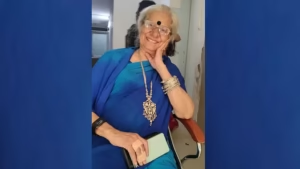“Empowering Rural Women: A Path to 20 Million Wealthy Women”

In the wake of Prime Minister Narendra Modi’s recent commitment to empower 20 million women to become ‘lakhpatis’ (millionaires), there has been considerable debate and skepticism. However, as someone closely associated with the Deen Dayal Antyodaya Yojana National Rural Livelihood Mission (DAYNRLM), I can assert that this aspiration is entirely achievable.
The success story begins with the formation of women’s self-help groups (SHGs) in southern states, which catalyzed their economic and social development. Thirty years ago, Dr. C Rangarajan’s approval of collateral-free lending up to Rs 10 lakh to these collectives marked a significant turning point. States like Kerala and Tamil Nadu have seen a drastic reduction in multi-dimensional poverty due to improved access to credit, vocational training, healthcare, and declining fertility rates.
Over the years, efforts to replicate this success in other parts of India have borne fruit. With initiatives like Jeevika, Anandhara, Ajeevika, Rajeevika, and more, 93 million women have joined DAYNRLM, contributing to substantial social capital growth. Collateral-free lending limits have increased to Rs 20 lakh per SHG, and millions of banking correspondents are delivering financial services to remote regions. Additionally, convergence with panchayats and other programs has further enhanced the impact.
Despite these achievements, challenges remain, particularly in terms of credit access and digital infrastructure. Collaborations with programs like One District One Product and support for local initiatives have also been instrumental. To reach the goal of 20 million women becoming lakhpatis, we must overcome these challenges and leverage the social capital of women’s collectives. Civil society and corporate responsibility can play crucial roles in this endeavor, leading us toward a more inclusive India. Ultimately, the path to success lies in collectives, capacity building, credit accessibility, and convergence – empowering women and creating wealth for the marginalized.
Re-reported from the article originally published in Wikimedia Commons.









